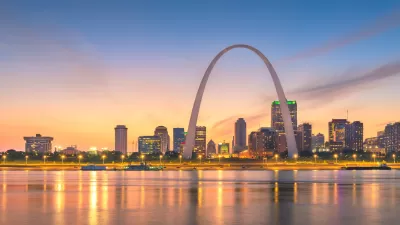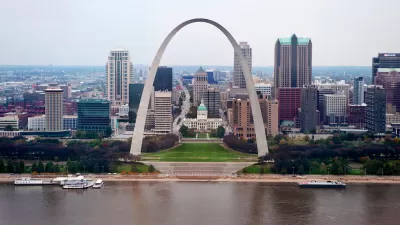Excavating in East St. Louis in advance of an approaching freeway and future development, archaeologists have uncovered the remains of a sophisticated American Indian settlement nearly a thousand years old that "no one knew existed."
Véronique LaCapra reports on the surprising settlement uncovered by Joe Galloy, with the Illinois State Archaeological Survey, and his team located five miles from the ancient city of Cahokia, once the largest American Indian city north of Mexico, and considered the greatest achievement of Mississippian culture.
"One of the things that I imagine an ancient visitor to this site would have experienced was kind of a sense of awe and wonder," Galloy says. "There would be fires and things like that. People cooking stuff - all sorts of activity. And you'd see this huge village. And it was probably a very impressive site, one of the largest settlements that people had seen if they hadn't been around this area before."
Scientists, including University of Illinois anthropologist Tim Pauketat, worry that the construction of a new bridge across the Mississippi River threatens the future of site. "By the time the East St. Louis dig wraps up later this year, only about a tenth of the ancient settlement will have been excavated. He [Pauketat] says once the new Mississippi River bridge is finished, the other 90 percent, which is still buried under private land, could be destroyed.
"Because East St. Louis is right across from St. Louis, it's prime land for any kind of commercial development," he says.
"Pauketat and a number of other archaeologists are trying to get the federal government to buy the land around the dig site."
Thanks to Daniel Lippman
FULL STORY: Ancient Suburb Near St. Louis Could Be Lost Forever

Planetizen Federal Action Tracker
A weekly monitor of how Trump’s orders and actions are impacting planners and planning in America.

Restaurant Patios Were a Pandemic Win — Why Were They so Hard to Keep?
Social distancing requirements and changes in travel patterns prompted cities to pilot new uses for street and sidewalk space. Then it got complicated.

Map: Where Senate Republicans Want to Sell Your Public Lands
For public land advocates, the Senate Republicans’ proposal to sell millions of acres of public land in the West is “the biggest fight of their careers.”

Orange County, Florida Adopts Largest US “Sprawl Repair” Code
The ‘Orange Code’ seeks to rectify decades of sprawl-inducing, car-oriented development.

Maui's Vacation Rental Debate Turns Ugly
Verbal attacks, misinformation campaigns and fistfights plague a high-stakes debate to convert thousands of vacation rentals into long-term housing.

San Francisco Suspends Traffic Calming Amidst Record Deaths
Citing “a challenging fiscal landscape,” the city will cease the program on the heels of 42 traffic deaths, including 24 pedestrians.
Urban Design for Planners 1: Software Tools
This six-course series explores essential urban design concepts using open source software and equips planners with the tools they need to participate fully in the urban design process.
Planning for Universal Design
Learn the tools for implementing Universal Design in planning regulations.
Heyer Gruel & Associates PA
JM Goldson LLC
Custer County Colorado
City of Camden Redevelopment Agency
City of Astoria
Transportation Research & Education Center (TREC) at Portland State University
Camden Redevelopment Agency
City of Claremont
Municipality of Princeton (NJ)





























